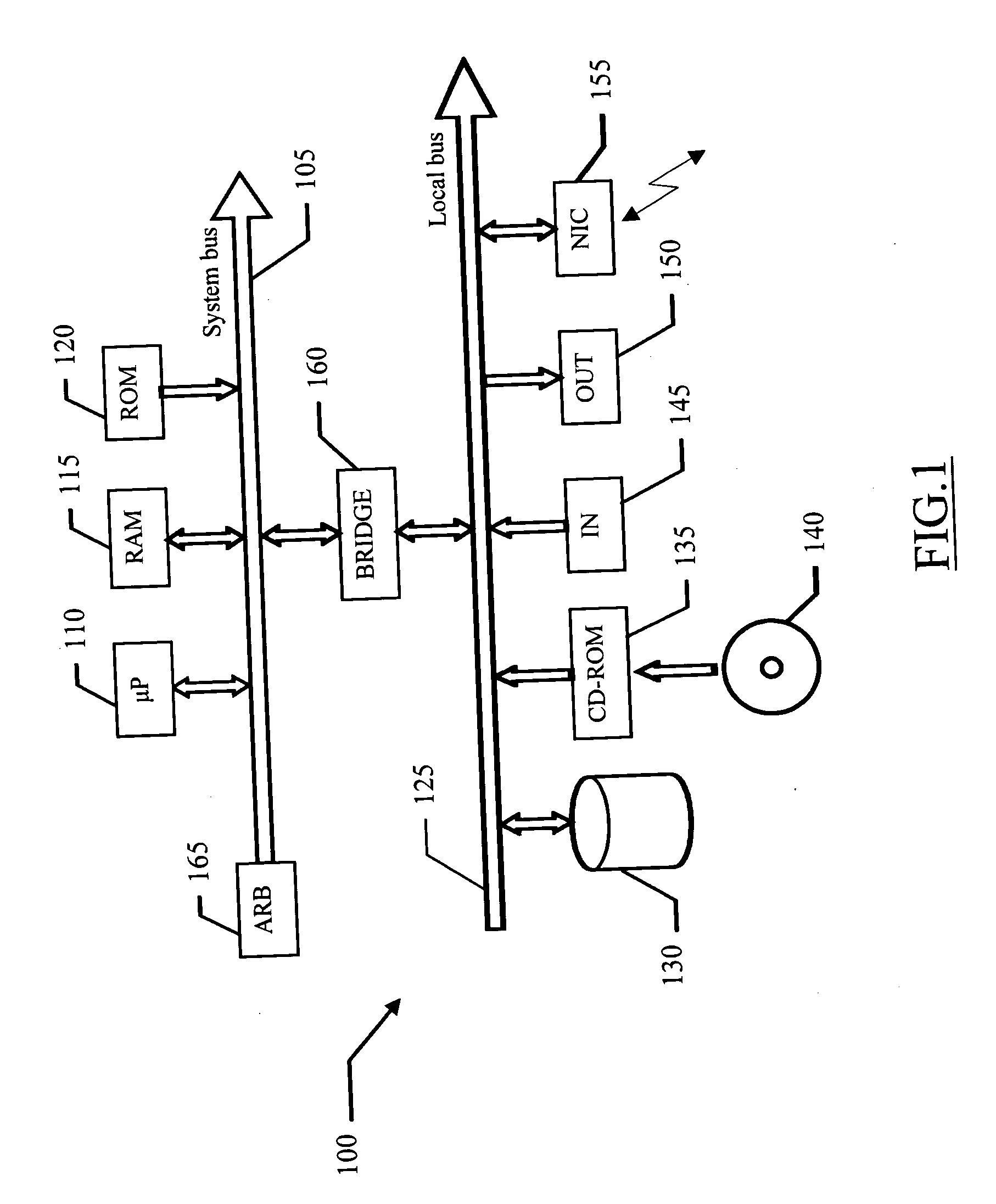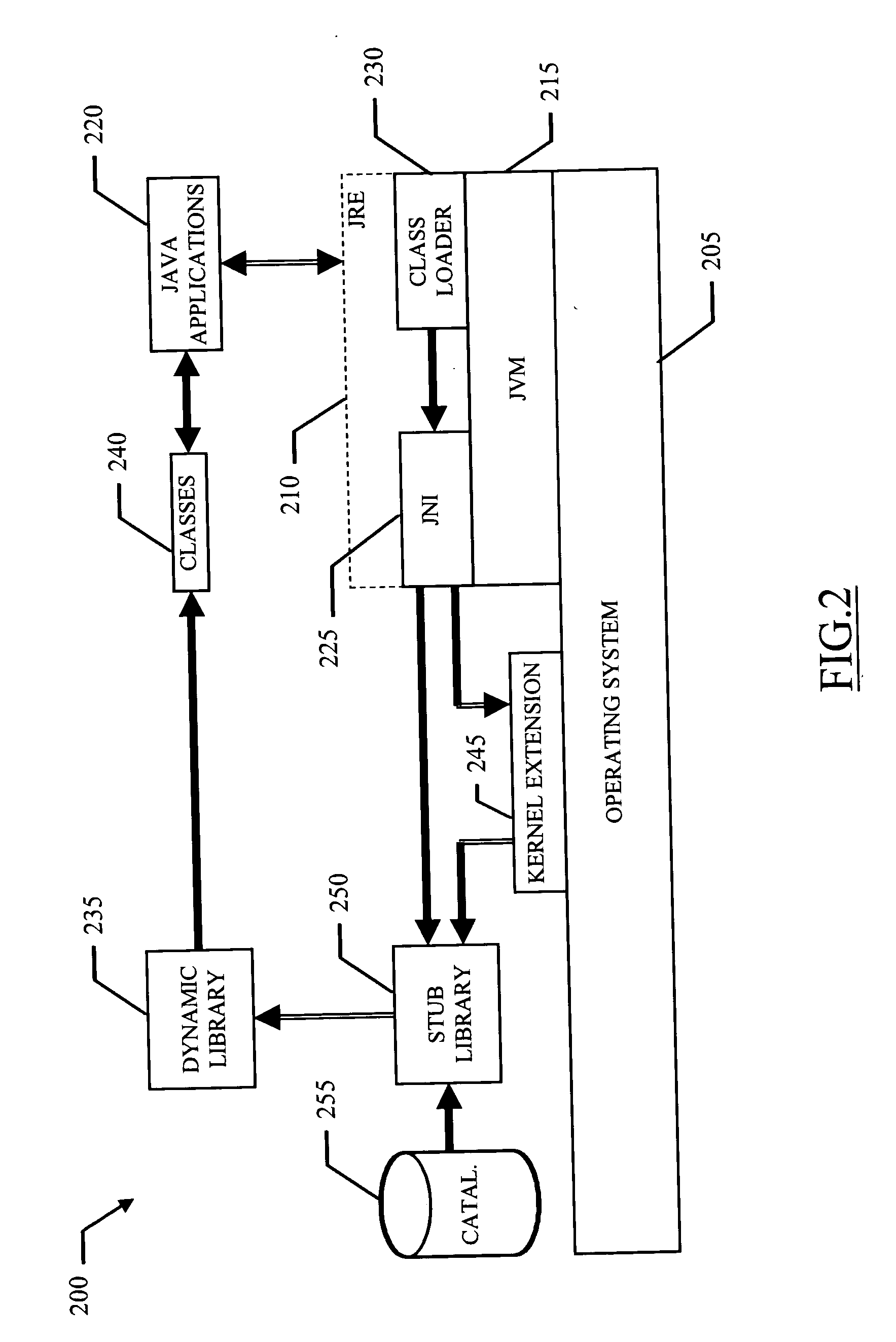Method and system for metering execution of interpreted programs
a technology of interpreting programs and methods, applied in the field of data processing, can solve problems such as unpaid royalties, uncontrolled distribution of this kind of products, and exacerbated problems, and achieve the effect of minimizing any interference with the actual execution
- Summary
- Abstract
- Description
- Claims
- Application Information
AI Technical Summary
Benefits of technology
Problems solved by technology
Method used
Image
Examples
Embodiment Construction
)
[0038] With reference in particular to FIG. 1, a computer 100 (such as a PC) is shown. The computer 100 is formed by several units that are connected in parallel to a system bus 105. In detail, a microprocessor (μP) 110 controls operation of the computer 100; a RAM 115 is directly used as a working memory by the microprocessor 110, and a ROM 120 stores basic code for a bootstrap of the computer 100. Peripheral units are clustered around a local bus 125 (by means of respective interfaces). Particularly, a mass memory consists of a hard-disk 130 and a drive 135 for reading CD-ROMs 140. Moreover, the computer 100 includes input devices 145 (for example, a keyboard and a mouse), and output devices 150 (for example, a monitor and a printer). A Network Interface Card (NIC) 155 is used to connect the computer 100 to a network. A bridge unit 160 interfaces the system bus 105 with the local bus 125. The microprocessor 110 and the bridge unit 160 can operate as master agents requesting an ac...
PUM
 Login to View More
Login to View More Abstract
Description
Claims
Application Information
 Login to View More
Login to View More - R&D
- Intellectual Property
- Life Sciences
- Materials
- Tech Scout
- Unparalleled Data Quality
- Higher Quality Content
- 60% Fewer Hallucinations
Browse by: Latest US Patents, China's latest patents, Technical Efficacy Thesaurus, Application Domain, Technology Topic, Popular Technical Reports.
© 2025 PatSnap. All rights reserved.Legal|Privacy policy|Modern Slavery Act Transparency Statement|Sitemap|About US| Contact US: help@patsnap.com



